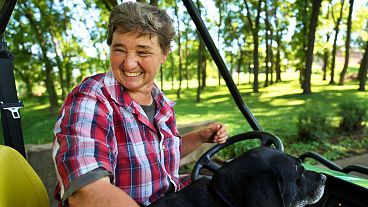Cities should be designed to incorporate lots of green space, the study recommends.
Children living in greener neighbourhoods have better lung function, according to a new study.
The research, led by the Barcelona Institute for Global Health (ISGlobal), looked at data from 35,000 children in eight different European countries - Denmark, France, Italy, Lithuania, Norway, the Netherlands, Spain and the UK.
It found a “robust” link between exposure to green spaces in early childhood and better lung function. Children living in greener neighbourhoods were found to have better lung function. Those living further away from green spaces had lower lung volume - the maximum amount of air a person can breathe out without a time limit after taking a deep breath.
“Our findings highlight the importance of integrating green spaces into urban environments for better respiratory health, also in children,” says lead author of the study Martine Vrijheid.
“If the way cities are configured is a factor that contributes to inequality, urban planning that consciously contributes to alleviating inequity is important.”
How do green spaces improve respiratory health?
The study’s authors say that our understanding of how green spaces affect lung function is still incomplete but they do have some theories.
“We know that green spaces reduce air pollution, which in turn affects respiratory health. We also believe that green spaces may expose children to beneficial microbiota, which may contribute to the development of the immune system and indirectly influence lung function,” explains Amanda Fernandes, first author and ISGlobal researcher.
“Finally, green spaces close to home are likely to reflect the presence of play areas that encourage physical activity at an age when the lungs are still developing.”
They also looked at the mothers’ home addresses during pregnancy to see if green spaces had an impact before birth. Greenness wasn’t associated with any of the indicators of respiratory health suggesting that the improved lung function is linked to something that happens in childhood.
Though better lung function was seen in children from all socioeconomic backgrounds, the effect was stronger in those from higher socioeconomic backgrounds.
“One possible explanation for this could be that families with higher education or income may have access to higher-quality, safer and better-maintained green areas,” says Fernandes.
















